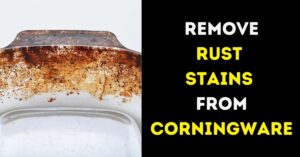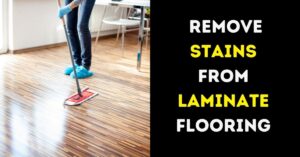
Cats can be wonderful companions, but their accidents can be frustrating and difficult to clean up, especially when it comes to removing cat urine from velvet furniture. Velvet is a delicate and luxurious fabric, and it requires special care to avoid damaging it during the cleaning process. If you’re dealing with a cat pee stain on your velvet couch, it’s important to act quickly and carefully to remove the stain and odor while preserving the integrity of the fabric.
We’ll explore some tips and techniques for getting cat pee out of velvet couches, including step-by-step instructions for removing the stain and odor.
We’ll also discuss some best practices for cleaning and maintaining velvet furniture, so you can keep your couch looking and feeling its best for years to come.
Does Cat Pee Stain?
Yes, cat pee can stain fabrics and other materials. The urine contains uric acid, which can cause discoloration and leave a persistent odor if not properly cleaned.

The stain can become more difficult to remove over time, so it is important to address it as soon as possible.
Additionally, the longer the urine sits, the more likely it is to seep deeper into the fabric, making it more challenging to remove the stain completely.
Are Cat Stains Permanent?
Cat stains can be permanent if they are not cleaned up properly and quickly. The longer the urine sits on a surface, the more it can soak in and bond to the material, making it harder to remove. Urine stains can also cause discoloration and damage to fabrics and other surfaces.
However, with prompt and proper cleaning, cat stains can usually be removed without leaving a permanent mark.
What You’ll Need
Make sure to gather your equipment and prepare your tools in advance, so you can easily access them when needed.
Your equipment should include:
- Dishwashing cleanser
- Laundry detergent solution
- Moisture
- Napkins
- Bag scrubber
- Smooth rags
- Compressor
- Blow heater
How to Get Cat Pee Out of Velvet Couch
While it may appear challenging to remove water from a velvet sofa, it is actually not difficult. By following the necessary steps, you can successfully remove water from the couch and restore it to its original condition.

- Blot up the urine: Use paper towels or a clean cloth to gently blot up as much of the urine as possible. Avoid rubbing the area, which can push the urine deeper into the fabric.
- Apply an enzymatic cleaner: Purchase an enzymatic cleaner specifically designed for pet urine stains from a pet store or online. Follow the instructions on the product label for the appropriate amount to use and how to apply it.
- Blot the area: Use a clean cloth or paper towel to gently blot the area where the enzymatic cleaner was applied. Avoid rubbing the area, which can damage the fabric.
- Let it dry: Allow the area to dry completely before sitting or placing anything on the couch. Depending on the size of the stain, this can take several hours to overnight.
- Vacuum the area: Once the area is dry, vacuum the spot to remove any remaining residue.
Other Best Ways to Get Cat Pee Out of Velvet Couch
Vinegar
White vinegar is a commonly used environmentally-friendly cleaning solution. It is effective in removing stains from floors, curtains, window frames, and even jewelry. It can also help break down cat urine stains on a velvet couch as it has alkaline properties that can neutralize the odor and help the fabric appear cleaner.
To use vinegar for cleaning cat urine stains on a velvet couch, mix equal parts of white vinegar and water in a spray bottle. Spray the solution onto the affected area and let it sit for 10-15 minutes. Blot the area with a clean cloth or paper towel until the stain and odor are removed. Repeat the process if necessary and then allow the area to air dry completely.
Baking Soda
It is an alkaline substance that can neutralize acidic substances, making it useful in removing odors from various surfaces, including velvet couches.
To use baking soda for cleaning cat urine stains on a velvet couch, first, blot the area with a clean cloth to remove any excess moisture. Then sprinkle baking soda over the affected area and let it sit for at least 30 minutes to absorb any remaining moisture and neutralize the odor.
After 30 minutes, vacuum up the baking soda using a vacuum cleaner with an upholstery attachment.
Prevent Your Cat from Peeing on Your Velvet Couch
If your cat is already spayed or neutered, it’s important to make sure that they don’t feel threatened or stressed. Make sure that they have a comfortable and safe environment, plenty of toys and scratching posts, and a regular routine.
Try to avoid any sudden changes in their environment or daily routine as this can cause anxiety and stress.
You can also try using a deterrent spray on the couch to discourage your cat from urinating on it again. You can make your own deterrent spray by mixing equal parts white vinegar and water in a spray bottle.
Cats dislike the smell of vinegar, so they are less likely to urinate on an area that has been sprayed with it.
Velvet Couch Care Tips
Tips on how to care for velvet furniture to ensure its longevity and maintain its beauty:
- Vacuum regularly: Use a soft brush attachment to remove dust and dirt from the surface of the velvet. Avoid using a high-powered vacuum as it can damage the delicate fibers of the fabric.
- Spot cleaning: In case of spills or stains, use a clean, damp cloth to blot the affected area gently. Do not rub the fabric as it can damage the texture and color of the velvet. For stubborn stains, consult a professional cleaner.
- Avoid direct sunlight: Velvet fabric can fade when exposed to direct sunlight. It is best to place your velvet furniture in a shaded area or use curtains to protect it from the sun’s rays.
- Fluff and rotate cushions: To maintain the shape of the cushions and prevent uneven wear, fluff and rotate them regularly. This will also help prevent the formation of permanent dents or creases in the velvet.
- Professional cleaning: To keep your velvet furniture looking its best, it is recommended to have it professionally cleaned every year or two. A professional cleaner will have the expertise and equipment to remove deep-seated dirt and stains without damaging the delicate fabric.
Conclusion
Animals may have occasional accidents, but if they continue to urinate outside of the litter box, it could be a sign of an underlying issue. If the problem persists, it’s important to have your pet examined by a professional.






